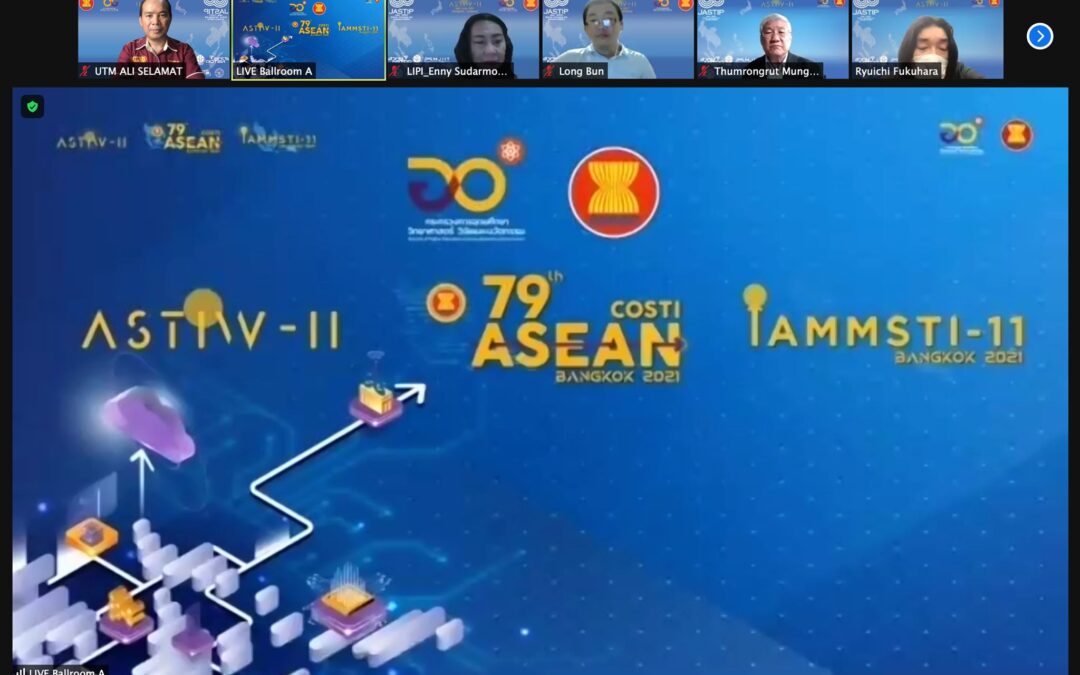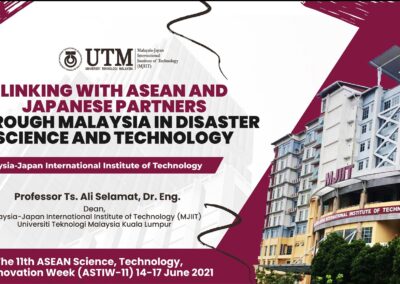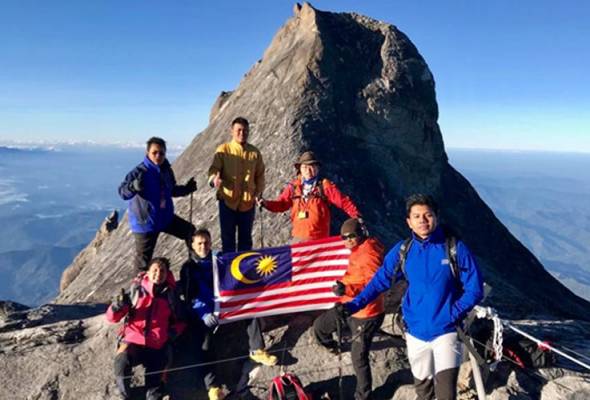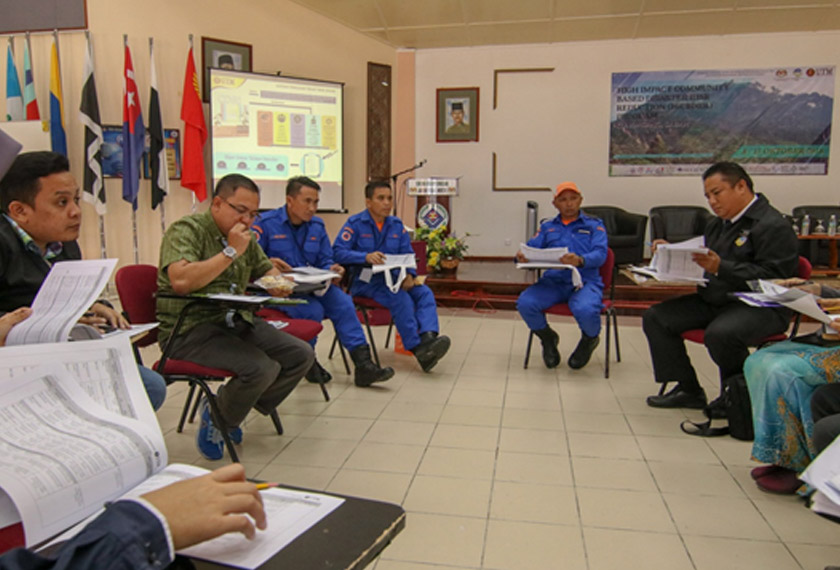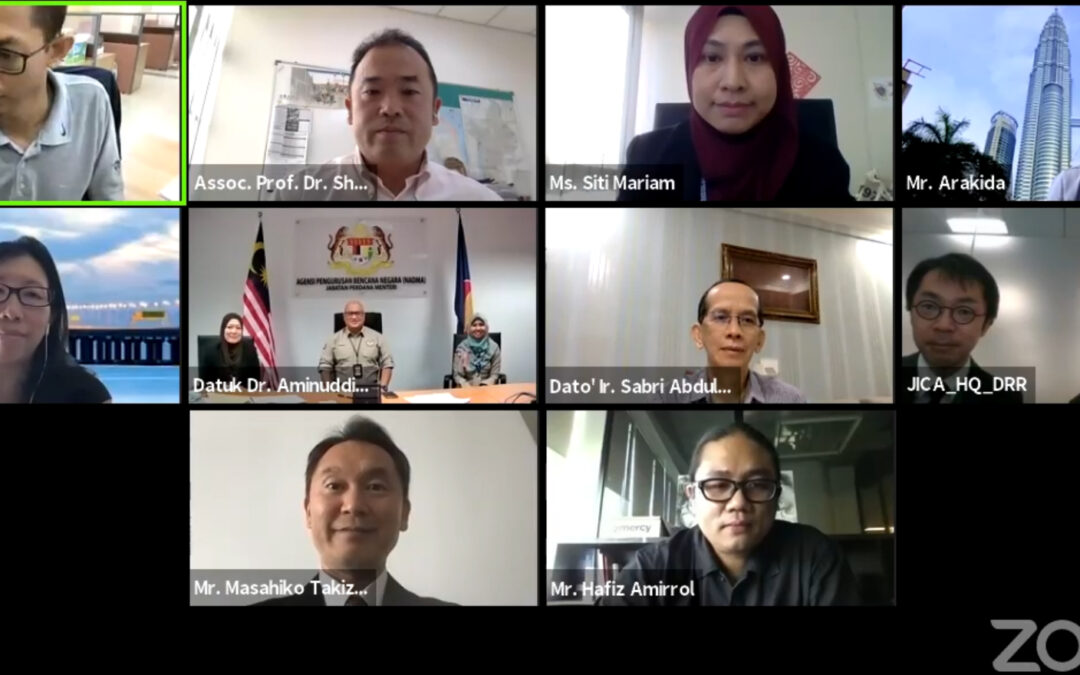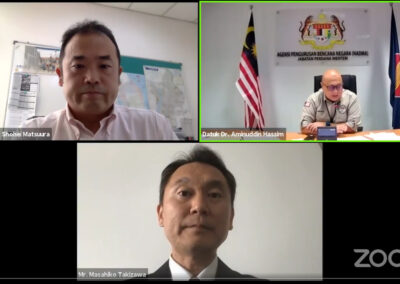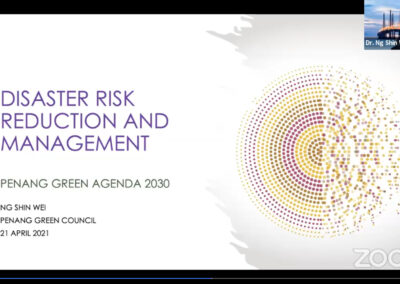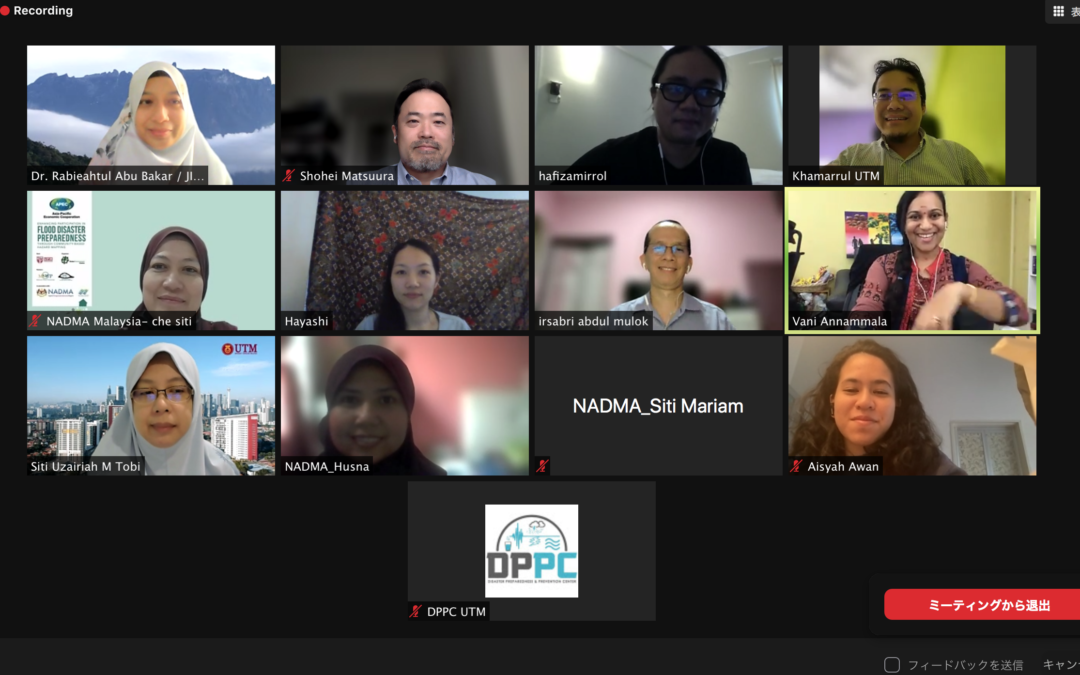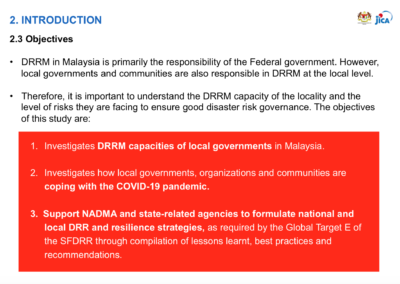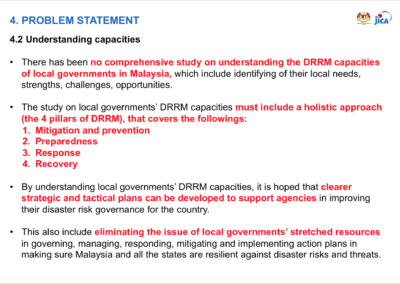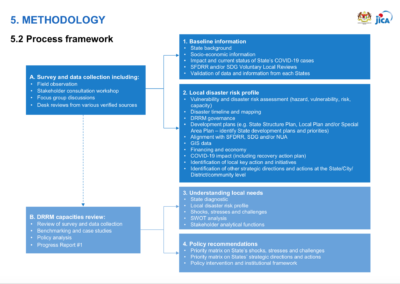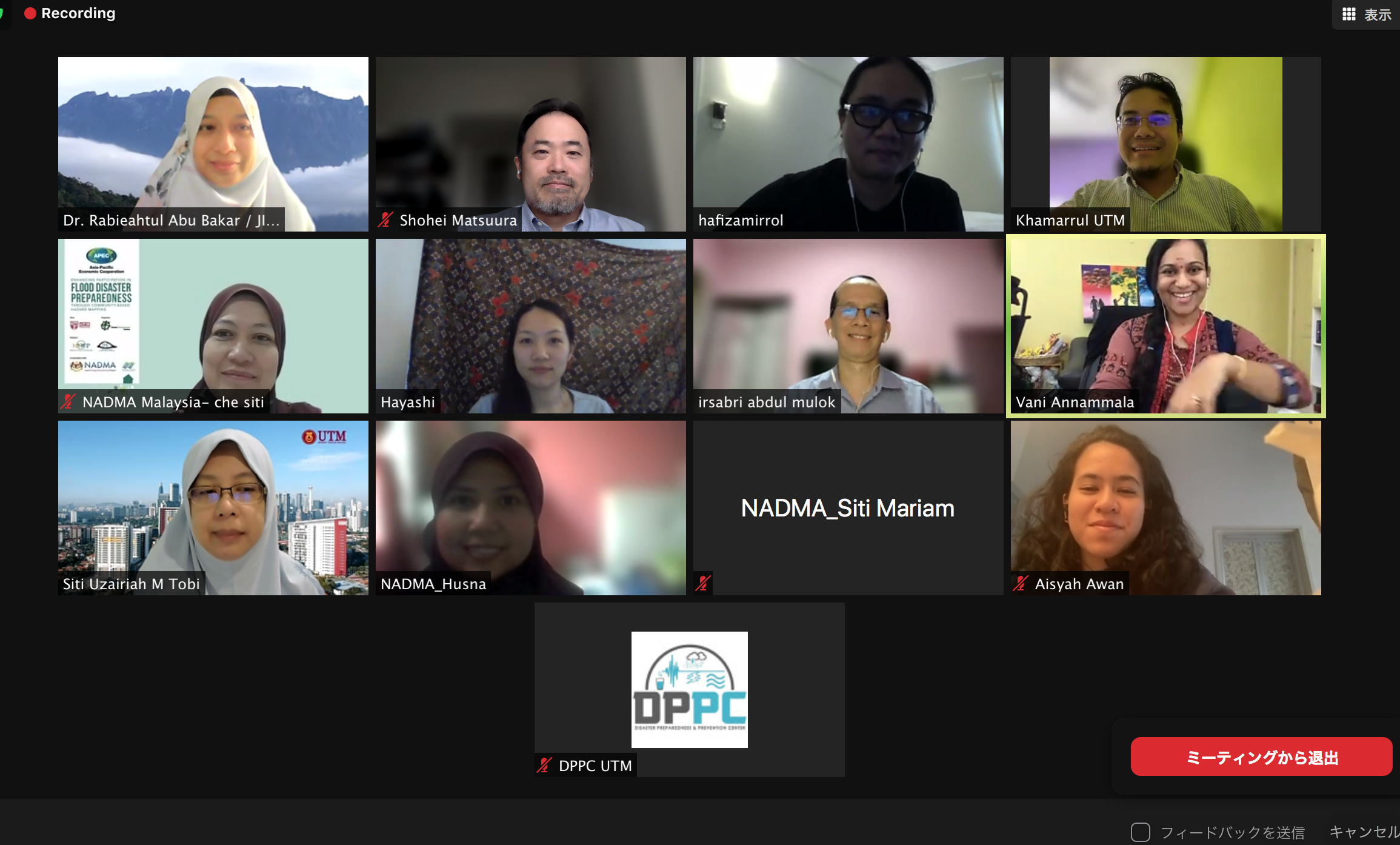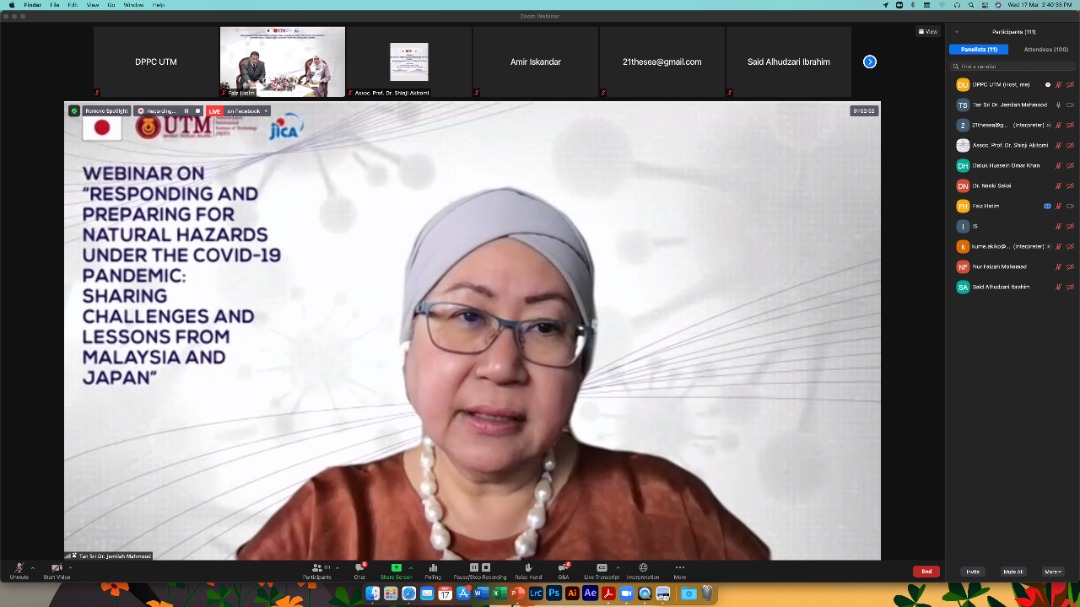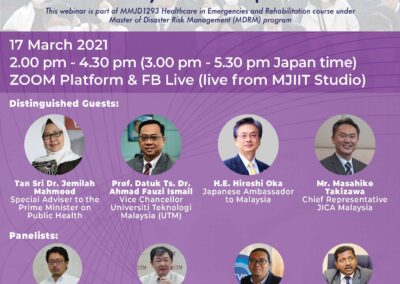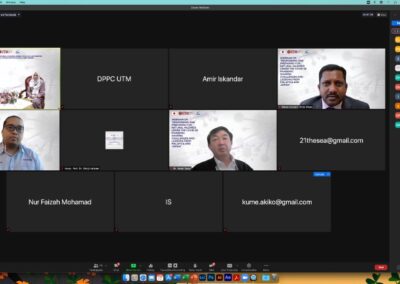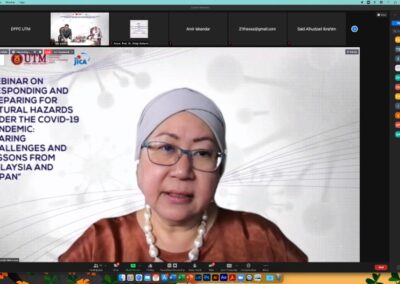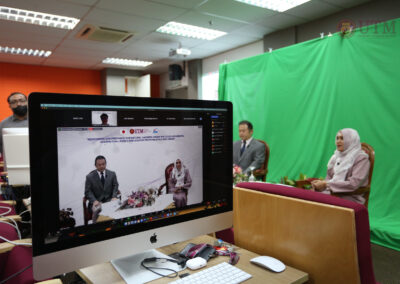Strengthening risk governance and communication
The Department of Mineral and Geoscience (JMG) Malaysia is presently implementing the Active Fault Mapping and Earthquake Risk project covering an area of 10,000 km2 including Ranau and Lahad Datu in Sabah for the period from 2016 until 2020. Through the project JMG Malaysia has published the Seismic Hazard Map which shows probabilistically affected zones by hazards and impacts based on earthquake intensity. Datuk Shahar Effendi Abdullah Azizi, the Director General of JMG Malaysia stated that the information in the seismic hazard map should be used in the design of building or structure which was incorporated into the Malaysian National Annex to Eurocode 8: Design of structures for earthquake resistance. We know that cities can never be made fully “earthquake-proof”. It makes no economic sense to prepare every building and put up a super-strong reinforcement. However, we should not be complacent. Complacency is the greatest threat in the face of a natural hazard that knows no time or season. It is important to do as much as you possibly can to prepare, raise the awareness in keeping the risk at the forefront of our minds.
It is worth to mention that the National Disaster Management Agency (NADMA) and its strategic partners including UTM have been organizing a series of disaster education and preparedness program to educate the communities-at-risk and champion the local actors for strengthening disaster resilience. Integration of disaster risk reduction and resilience is critical in all sectors to ensure vertical and horizontal policy and programme coordination. It empowers authorities and local communities, including through resources, incentives, and decision-making responsibilities, as appropriate for supporting local leadership..
Mainstreaming DRR into development planning and societal resilience
As a result of the 2015 Sabah earthquake, socio-economic and environment impact can be seen even now in Kota Belud, the rice bowl of Sabah. Based on the state record, self-sufficiency in food indicated that rice remained the second largest dependent food items in Sabah. Vegetable and fruits contribute about 50% and 85% in the local food self-sufficiency, respectively. Managing food security and natural resources is very challenging to meet the need and demand, therefore must be well tackled. Flood and drought during wet and dry season, respectively with significant impacts on agriculture production, rice plantation, and cultivation. With DRR in mind, a cost-effective implementation of water resources, water demand and disaster mitigation is crucial to support the sustainable development of affected river basin. The area also suffered from sediment-based disaster including debris flow resulted in malfunction water intake, poor clean water supply and water security, thus affecting the tourism industry.
Fadzlina Aini Mohmad Lehan, a PhD student in UTM Geohazard who studies the business continuity and its impact using geospatial technology suggested the needs of business continuity plan and intelligent geospatial-based system to quantify the business impact for future seismic risk. Cascading geohazards had also damaged the benthic habitat that formed the Tagal system and affected the local tourism activity. With a high-steep mountain and short-distance river, multi-hazard impact based early warning system (EWS) is critically needed to reduce future sediment-based disaster risk. EWS plays a critical role for supporting these tasks, and thus, the key component of DRR with great contribution to the Sendai Framework Target A in reducing the fatalities and Target B in reducing the economic losses.
Muhammad Iylia Rosli, one of the researchers at UTM Geohazard, who studies debris flow-induced by earthquake and rainfall in Sabah said: “With better understanding of source area and field parameterization, debris flow can be properly modelled to quantify the extend of run-out and its impacts to the people and assets at the downstream”. UTM and its strategic partners put forth advance mapping, monitoring, modelling, mitigation, and risk reduction of debris flow, one of hyper-concentrated flows that remained as the most fatal disaster with highest recorded human losses in Malaysia.
“Land-use change and its impact as results of geohazards is a crucial aspect for promoting risk-informed development in a tourist-demanding region”, said Nur Afiqah Mohd Kamal, a postgraduate student at UTM Geohazard, who is studying the pre- and post-impact of the earthquake. This study provides a significant input for supporting Sabah Structure Plan 2033 that also listed tourism and agriculture based strategies for future physical development growth, as well as Long-term Strategic Action Plan 2035 (Sabah.LEAP2035) which has an overall aim to elevate the State into an innovative, knowledge-based, and an attractive high-end environmentally friendly investment destination. Moreover, this article urges the use of scientific knowledge-based decision making, emphasizing local risk adaptation, to reduce losses of life, livelihoods, and the economic, physical, social, cultural and environmental assets of people, businesses and communities.
Unlocking data for assessing future disaster risk
Data is the lifeblood of decision-making and the raw material for accountability. Decision makers require a full access of data and information to successfully manage disaster risk. Intelligent data-driven repository shall be explored as a key requirement for supporting the development of a risk management strategy, with the opportunity to enhance interactions across science, policy, and practice. The call for better disaster database, risk register and repository made possible to strengthen risk governance and communication at various level. The role of science and technology in providing evidence for policy is gaining prominence, with demand growing for multidisciplinary enquiry to address the complex and inter-related problems of climate change, disasters and sustainable development. Innovations in methods, tools and analyses have made significant leaps in finding solutions, with more data become widely accessible.
Making Cities and Societies Resilient to New Risk
The Deputy Prime Minister of Malaysia also stated succinctly in Geneva about the Development Planning Guideline for Disaster Resilient City. This national guideline was developed based on the dedicated study carried out by many national experts over 12 major cities covering six different natural hazards and disaster types, namely floods, landslides, earthquakes, tsunami, coastal erosion, and sea-level rise in Malaysia. This policy document provides strategies, action- and implementation plans for preparing vulnerable cities to be more resilient to disaster. Based on the Climate-based Disaster Resilient Index (CDRI) method, the Kundasang-Ranau was assessed and falls within the “acceptable” range of 3.40 with highest and lowest rank reported at 3.79 (social) and 2.93 (economy), respectively.
Finance, savings, budget and subsidies contributed to lowest rank under the economic component. Therefore, disaster recovery may delay and disrupt the build-back-better. Lt. Col. Mohamad Fazli Sardi, a Civil Defence Force Officer and UTM’s PhD student, who lead the disaster resilient study in Kundasang said “commitment and participation of local stakeholders are key factors in designing action-oriented strategies for disaster risk”. This output provides an insight into developing an integrated DRR framework for strengthening disaster resilient community in Malaysia. Our focus is to develop a stronger interface between science, policy and practice, by promoting effective collaboration between scientists and local authorities. This is essential in filling in the gaps in DRR supported by science and technology knowledge-based actions. A broader and people-centered approach in urban resilience focuses on all-of-society empowerment, the engagement of and addressing the people immensely affected.
Preparing for the worst
Earthquake and seismic activity has been intensified in frequency and its impact is significant to livelihoods, socioeconomic, and public infrastructures. Increased vulnerability of the community is mainly driven by increasing population pressure in prone areas, urbanisation and poor urban planning, resulting in an eight-fold increase in economic losses over the past four decades globally. Disaster risk is directly linked to broader development problems characterized by underlying risk drivers, including lack of regulations and enforcements. This article urges the need for smart innovation and cross-sectoral partnership, linked to practice and diverse stakeholders to support the evidence based decision-making for reducing future disaster risk. It also provides an insight into more dedicated action for tackling underlying disaster risk drivers and strengthening good governance in DRR strategies, at all levels and across sectors and actors.
The Sendai Framework identifies development of national and local disaster risk reduction strategies as a top priority, to be accomplished by 2020. UTM Geohazard and its strategic partners have been promoting the “Words into Action” initiative to supports the basis for achievement of Target E, which calls to “substantially increase the number of countries with national and local disaster risk reduction strategies”. In order to develop and implement a local disaster risk reduction and resilience strategy, DRR should be mainstreamed into all the key functions that local authorities regularly undertake, involving different sectors and stakeholders.
DRR strategies should be transparent, measurable and achievable. Given extreme climate, environmental degradation and rapid urbanization, the frequency and magnitude of disasters are escalating. Therefore, it is crucial for us to better cope the disaster capacity, assessing our increased exposure to natural hazards and advancing our risk understanding. It is also important to develop a set of key recommended actions to strengthen policy, technical solutions and advocacy based on science and technology.
The Sendai Framework identifies development of national and local disaster risk reduction strategies as a top priority, to be accomplished by 2020. UTM Geohazard and its strategic partners have been promoting the “Words into Action” initiative to supports the basis for achievement of Target E, which calls to “substantially increase the number of countries with national and local disaster risk reduction strategies”. In order to develop and implement a local disaster risk reduction and resilience strategy, DRR should be mainstreamed into all the key functions that local authorities regularly undertake, involving different sectors and stakeholders.
Dr. Khamarrul Azahari Razak
Director of Disaster Preparedness and Prevention Centre (DPPC), MJIIT UTM Kuala Lumpur
Co-Chair,Climate Change and Disaster Risk Reduction WG, Global Young Academy
For Astro Awani version, please visit HERE.
